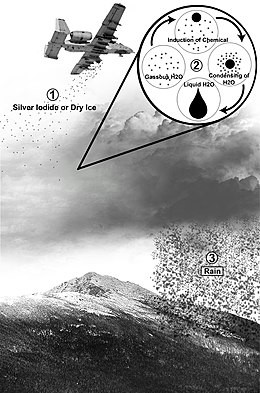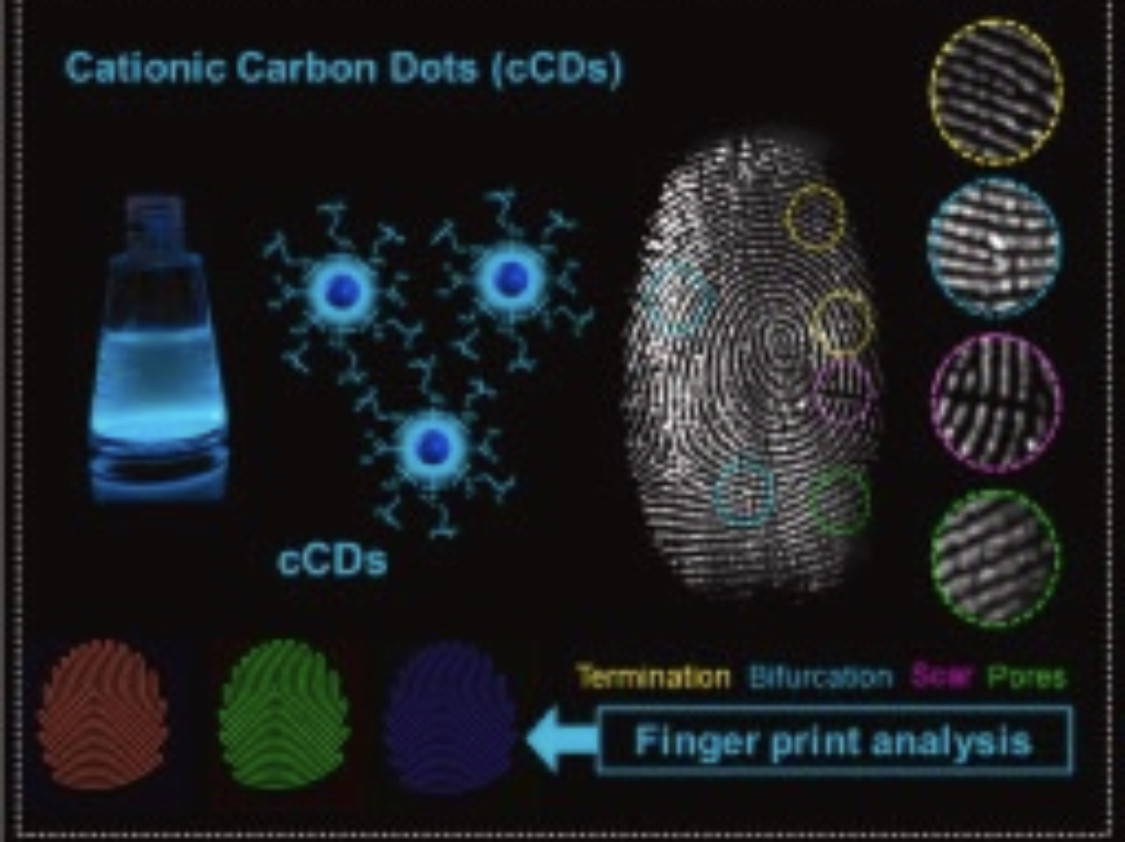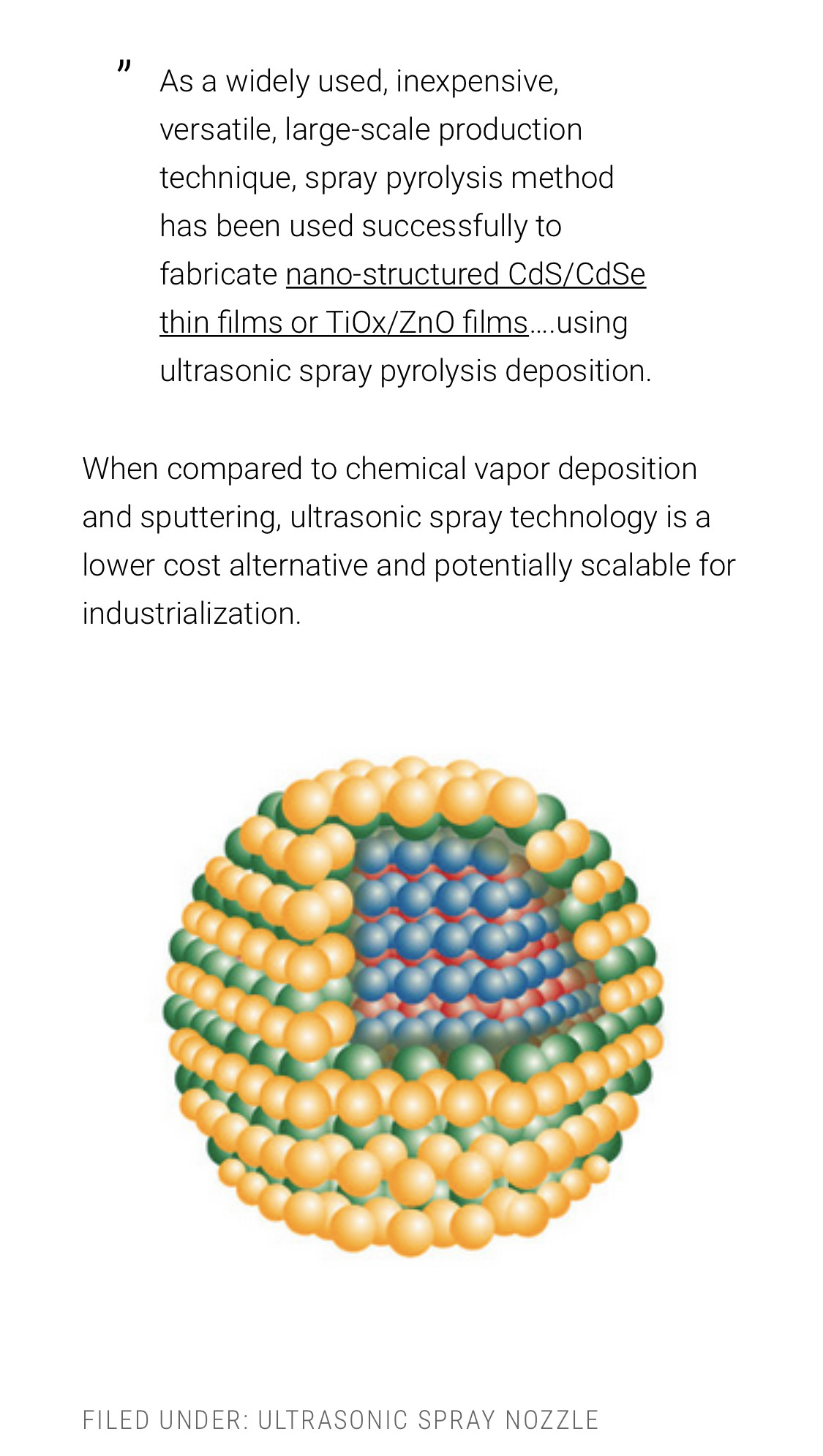The Mac
@TheMac
06 August, 08:03
Notice: Undefined index: tg1tga_access in /home/admin/www/anonup.com/themes/default/apps/timeline/post.phtml on line 396
Mr. Boxoffrogs
@boxoffrogs
06 August, 08:45
In response The Mac to his Publication
Except it's not silver iodine... it's aluminum, strontium, and beryllium... all much cheaper and much more toxic.
Notice: Undefined index: tg1tga_access in /home/admin/www/anonup.com/themes/default/apps/timeline/post.phtml on line 396
Mr. Boxoffrogs
@boxoffrogs
06 August, 08:46
In response Mr. Boxoffrogs to his Publication
Notice: Undefined index: tg1tga_access in /home/admin/www/anonup.com/themes/default/apps/timeline/post.phtml on line 396
The Mac
@TheMac
06 August, 09:46
In response Mr. Boxoffrogs to his Publication
Silver nanoparticles produce a stronger plasmon resonance than gold nanoparticles it can be due to the large reflectivity from the metal surface. TEM images indicate that change in the size of nanoparticles with increasing the laser fluence is in good agreement with the Mie theory.
Notice: Undefined index: tg1tga_access in /home/admin/www/anonup.com/themes/default/apps/timeline/post.phtml on line 396
Mr. Boxoffrogs
@boxoffrogs
06 August, 10:13
In response The Mac to his Publication
The list of common ferrous metal properties include: Durable Good tensile strength Good electrical conductivity Low corrosion resistance Silver in colour Recyclable Usually magnetic Ferrous metals can include a wide range of different alloying elements, including chromium, nickel, manganese, molybdenum, and vanadium, manganese. Are we going down a climate change rabbit hole here? Silver is too expensive. They are using exactly the metals found in the rainwater samples, appearing as Aluminum, Beryllium and Strontium. It has killed several species of plants in my yard both here and in Maryland where I lived when this program began. https://youtu.be/Zbkwjno7T...
Notice: Undefined index: tg1tga_access in /home/admin/www/anonup.com/themes/default/apps/timeline/post.phtml on line 396
The Mac
@TheMac
06 August, 11:32
In response Mr. Boxoffrogs to his Publication
hold on..
Notice: Undefined index: tg1tga_access in /home/admin/www/anonup.com/themes/default/apps/timeline/post.phtml on line 396
The Mac
@TheMac
06 August, 11:47
In response The Mac to his Publication
Notice: Undefined index: tg1tga_access in /home/admin/www/anonup.com/themes/default/apps/timeline/post.phtml on line 396
The Mac
@TheMac
06 August, 11:48
In response The Mac to his Publication
Notice: Undefined index: tg1tga_access in /home/admin/www/anonup.com/themes/default/apps/timeline/post.phtml on line 396
The Mac
@TheMac
06 August, 11:50
In response The Mac to his Publication
Notice: Undefined index: tg1tga_access in /home/admin/www/anonup.com/themes/default/apps/timeline/post.phtml on line 396
The Mac
@TheMac
06 August, 11:50
In response The Mac to his Publication
Coal is the most abundant and readily combustible energy resource being used worldwide. However, its structural characteristic creates a perception that coal is only useful for producing energy via burning. Here we report a facile approach to synthesize tunable graphene quantum dots from various types of coal, and establish that the unique coal structure has an advantage over pure sp2-carbon allotropes for producing quantum dots.
Notice: Undefined index: tg1tga_access in /home/admin/www/anonup.com/themes/default/apps/timeline/post.phtml on line 396
The Mac
@TheMac
06 August, 11:51
In response The Mac to his Publication
The crystalline carbon within the coal structure is easier to oxidatively displace than when pure sp2-carbon structures are used, resulting in nanometre-sized graphene quantum dots with amorphous carbon addends on the edges. The synthesized graphene quantum dots, produced in up to 20% isolated yield from coal, are soluble and fluorescent in aqueous solution, providing promise for applications in areas such as bioimaging, biomedicine, photovoltaics and optoelectronics, in addition to being inexpensive additives for structural composites.
Notice: Undefined index: tg1tga_access in /home/admin/www/anonup.com/themes/default/apps/timeline/post.phtml on line 396
The Mac
@TheMac
06 August, 11:53
In response The Mac to his Publication
Notice: Undefined index: tg1tga_access in /home/admin/www/anonup.com/themes/default/apps/timeline/post.phtml on line 396
The Mac
@TheMac
06 August, 11:53
In response The Mac to his Publication
Notice: Undefined index: tg1tga_access in /home/admin/www/anonup.com/themes/default/apps/timeline/post.phtml on line 396
The Mac
@TheMac
06 August, 11:53
In response The Mac to his Publication
Notice: Undefined index: tg1tga_access in /home/admin/www/anonup.com/themes/default/apps/timeline/post.phtml on line 396
The Mac
@TheMac
06 August, 11:54
In response The Mac to his Publication
Notice: Undefined index: tg1tga_access in /home/admin/www/anonup.com/themes/default/apps/timeline/post.phtml on line 396
The Mac
@TheMac
06 August, 11:55
In response The Mac to his Publication
Notice: Undefined index: tg1tga_access in /home/admin/www/anonup.com/themes/default/apps/timeline/post.phtml on line 396
06 August, 12:35
In response The Mac to his Publication
They dont crash like that, they disappear into ground holes. 😁
Notice: Undefined index: tg1tga_access in /home/admin/www/anonup.com/themes/default/apps/timeline/post.phtml on line 396
The Mac
@TheMac
06 August, 10:34
In response Jason VanDerpoel to his Publication
Think fuel?
Notice: Undefined index: tg1tga_access in /home/admin/www/anonup.com/themes/default/apps/timeline/post.phtml on line 396
The Mac
@TheMac
06 August, 10:36
In response The Mac to his Publication
Notice: Undefined index: tg1tga_access in /home/admin/www/anonup.com/themes/default/apps/timeline/post.phtml on line 396
06 August, 10:37
In response The Mac to his Publication
I understand brother.
Notice: Undefined index: tg1tga_access in /home/admin/www/anonup.com/themes/default/apps/timeline/post.phtml on line 396
The Mac
@TheMac
06 August, 10:38
In response Jason VanDerpoel to his Publication
Mechanical sound wave which has periodic vibrations and frequencies of more than 20 KHz, which in turn is more than upper human audible range frequency, is known as ultrasound (US) wave (Abu Zidan et al. 2011). It is produced through a transducer that utilizes piezoelectric component or an electromagnetic inductor which has the capability of converting electrical signal into mechanical vibrations and vice versa (Hangiandreou 2003).
Notice: Undefined index: tg1tga_access in /home/admin/www/anonup.com/themes/default/apps/timeline/post.phtml on line 396
The Mac
@TheMac
06 August, 10:40
In response The Mac to his Publication
The vibration of Fe3O4 nanoparticles in response to an alternating magnetic field can be sensitively detected using contact mode atomic force microscopy (AFM) combined with selective modulation of magnetic domains. While imaging patterned samples of magnetic nanoparticles with contact mode AFM, a magnetic field was applied to drive sample vibration. The field altered in polarity and strength according to parameters of an AC current applied to a solenoid located under the sample. The vibration of Fe3O4 nanoparticles was detected by a nonmagnetic AFM tip to map the changes in frequency and amplitude of the vibrating sample at the level of individual Fe3O4 nanoparticles and clusters.
Notice: Undefined index: tg1tga_access in /home/admin/www/anonup.com/themes/default/apps/timeline/post.phtml on line 396
The Mac
@TheMac
06 August, 10:40
In response The Mac to his Publication
Colloidal lithography was used to prepare patterns of Fe3O4 nanoparticles on a glass surface using basic steps of mixing, drying and removing the surface template of latex spheres. Monodisperse latex were used to guide the deposition of magnetic nanoparticles to collect in the spaces in between the close-packed spheres of the latex film. With a mixture approach of “two-particle” lithography, 2D arrays of patterned aggregates of metal nanoparticles were generated which formed a periodic, well-defined arrangement that was suitable for subsequent characterizations with magnetic sample modulation (MSM).
Notice: Undefined index: tg1tga_access in /home/admin/www/anonup.com/themes/default/apps/timeline/post.phtml on line 396
The Mac
@TheMac
06 August, 10:42
In response The Mac to his Publication
To perform a study, the person is positioned within an MRI scanner that forms a strong magnetic field around the area to be imaged. First, energy from an oscillating magnetic field is temporarily applied to the patient at the appropriate resonance frequency. Scanning with X and Y gradient coils causes a selected region of the patient to experience the exact magnetic field required for the energy to be absorbed. The atoms are excited by a radio frequency (RF) pulse and the resultant signal is measured by a receiving coil. The RF signal may be processed to deduce position information by looking at the changes in RF level and phase caused by varying the local magnetic field using gradient coils.
Notice: Undefined index: tg1tga_access in /home/admin/www/anonup.com/themes/default/apps/timeline/post.phtml on line 396
The Mac
@TheMac
06 August, 10:43
In response The Mac to his Publication
As these coils are rapidly switched during the excitation and response to perform a moving line scan, they create the characteristic repetitive noise of an MRI scan as the windings move slightly due to magnetostriction. The contrast between different tissues is determined by the rate at which excited atoms return to the equilibrium state. Exogenous contrast agents may be given to the person to make the image clearer.
Notice: Undefined index: tg1tga_access in /home/admin/www/anonup.com/themes/default/apps/timeline/post.phtml on line 396
06 August, 10:44
In response The Mac to his Publication
Why do I always feel like your the guy trying to wake me up from a coma, and when I come to, you like, "dude I couldnt have said it any simpler". Love You Man. 🙏❤️
Notice: Undefined index: tg1tga_access in /home/admin/www/anonup.com/themes/default/apps/timeline/post.phtml on line 396
The Mac
@TheMac
06 August, 10:51
In response Jason VanDerpoel to his Publication
The major structural material employed in the towers was A36 structural steel, although higher strength steel was used in the lower elevations of the structure. Except for some selected floors, for which normal strength concrete was employed, the
composite
slabs were made of a 21MPa (3ksi) lightweight concrete
composite
slabs were made of a 21MPa (3ksi) lightweight concrete
Notice: Undefined index: tg1tga_access in /home/admin/www/anonup.com/themes/default/apps/timeline/post.phtml on line 396
06 August, 10:53
In response The Mac to his Publication
👀
Notice: Undefined index: tg1tga_access in /home/admin/www/anonup.com/themes/default/apps/timeline/post.phtml on line 396
The Mac
@TheMac
06 August, 10:57
In response Jason VanDerpoel to his Publication
The cement-based materials can be mixed with nanomaterials such as nano-silica (nano-SiO2), nano-alumina (nano-Al2O3), nano-ferric oxide (nano-Fe2O3), nano-titanium oxide (nano-TiO2), carbon nanotubes (CNTs), graphene and graphene oxide.
Notice: Undefined index: tg1tga_access in /home/admin/www/anonup.com/themes/default/apps/timeline/post.phtml on line 396
The Mac
@TheMac
06 August, 10:58
In response The Mac to his Publication
Nanotechnology improves the bulk property of concrete, helps to obtain thinner final products, faster setting time and lowered levels of environmental attack. Some of the novel advancement on nanotechnology is its ability to use marginal and recycled materials.
Notice: Undefined index: tg1tga_access in /home/admin/www/anonup.com/themes/default/apps/timeline/post.phtml on line 396
Only people mentioned by IamJason913 in this post can reply












